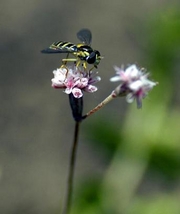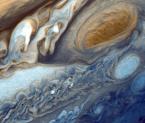May 25, 2005

And you thought we’d killed off the little darlings--Since we humanoids persist in killing off species, it is always a pleasure to announce one we missed. Last month it was the ivory-billed woodpecker. Now it is the Mt. Diablo buckwheat, a flower everyone was sure was killed off by the developers in Northern California. No one had seen one in 60 years. Known to its friends as Eriogonom truncatum, it was found in a remote section of a Contra Costa County Park east of San Francisco. It looks like baby’s breath. A Berkeley graduate student who is doing a dissertation on integrative biology, Michael Park, found it. One assumes he’ll get the degree.

To boldly go, split infinitives and all—These are the voyages of the starship, well, Voyager, to boldly go where no spacecraft has gone before. The little Voyager 1 spacecraft, which has survived solar wind, more than a half dozen planetary orbits, the asteroid belt and a really bad StarTrek movie, is leaving the solar system after safely transiting the termination shock, the edge. It is now entering the heliosheath, and is heading into interstellar space. The shock comes when the solar winds bump up against gas from deep space. It, and its twin, Voyager 2, have been on their way for 26 years, traveling some 8.7 billion miles and still capable of chirping back data. It was launched to go to Saturn and Jupiter and kept going. Voyager 2 went to Uranus and Neptune. They can keep transmitting to 2020. [I am now thinking of ending a sentence with a preposition and really going over the top. It’s a good thing to end this story with.] WP

If it wasn't so damned cold up there—Health Canada has done something no other country has done, boldly going—ooops. They have published a database of drug reactions. It took a series of stories on the CBC to get them to move but it is there, and you can get it here. In the U.S., the FDA has produced such a list but only on CD-ROM and for a fee. The Canadian list is on the web, free. It will be updated four times a year.
No comments:
Post a Comment